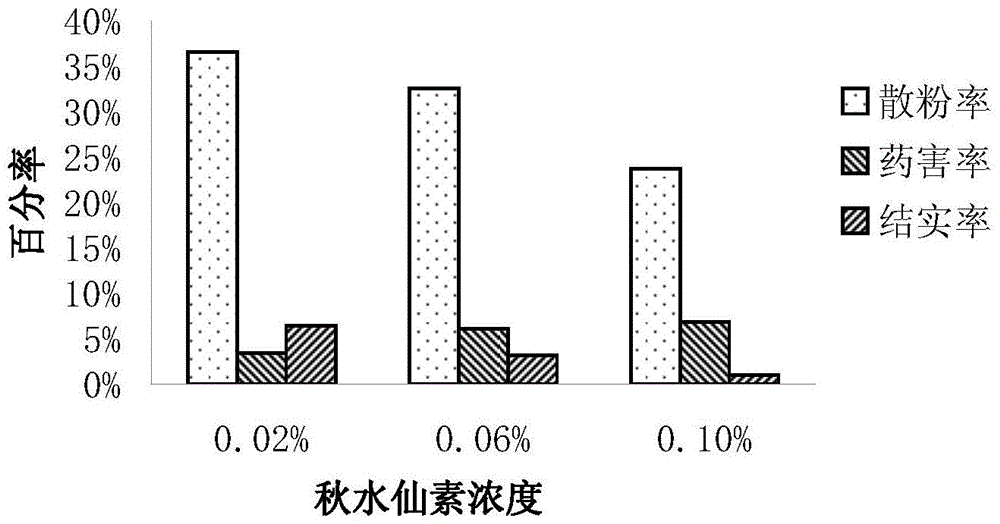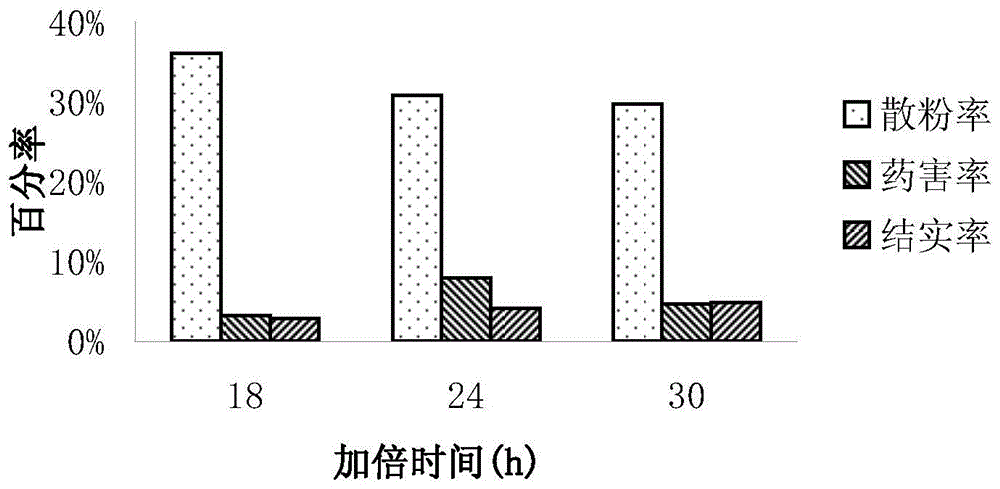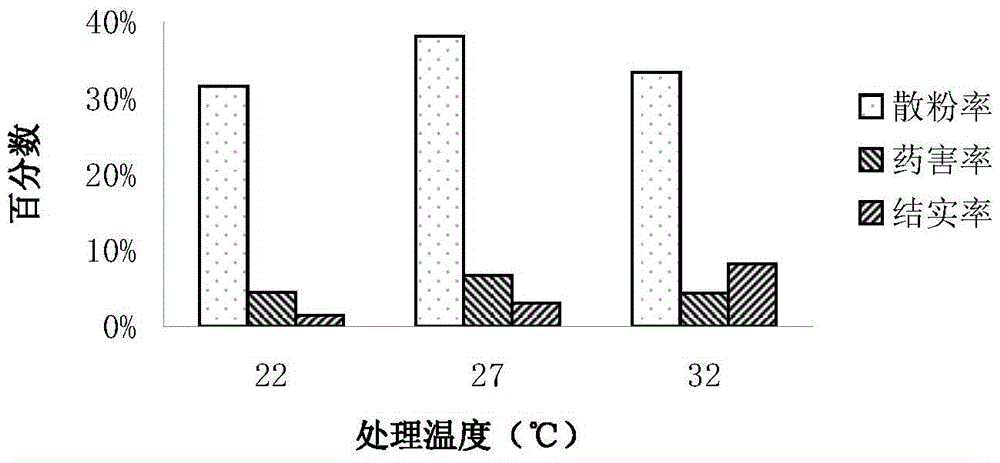A kind of sweet corn haploid chemical soaking and doubling method
A sweet corn and haploid technology, applied in the field of agriculture, can solve the problems of lack of sweet corn research, achieve the effects of reducing chemical consumption, reducing toxicity, and saving seed treatment time
- Summary
- Abstract
- Description
- Claims
- Application Information
AI Technical Summary
Problems solved by technology
Method used
Image
Examples
Embodiment 1
[0043] Example 1 Chemical soaking seed doubling test of "Yuetian No. 13" sweet corn haploid seeds doubling in 0.02% colchicine at 32°C for different times
[0044] (1) Seed disinfection
[0045] Divide sweet corn haploid seeds into 9 portions, each containing 450 haploid seeds, and put them in sterile mesh bags; sterilize them with 75% ethanol for 1 min, take them out, and then use the volume fraction Treat with 15% sodium hypochlorite solution for 15 minutes, and then rinse with sterile water for 3 times;
[0046] (2) Double the seed
[0047] Put 9 parts of sterilized seeds into the nutrient solution containing mass fraction of 0.02% colchicine, and the amount of nutrient solution added to each seed mesh bag shall be subject to just submerging the seeds; 3 parts of the seeds are placed in a 32°C Treat in an artificial climate box for 18 hours, place 3 seeds in an artificial climate box at 32°C for 24 hours, and place the other 3 seeds in an artificial climate box at 32°C fo...
Embodiment 2
[0060] Example 2 Chemical soaking doubling test of haploid seeds of "Yuetian No. 13" sweet corn in 0.02% colchicine at 27°C for different times
[0061] (1) Seed disinfection
[0062] Divide sweet corn haploid seeds into 9 portions, each containing 450 haploid seeds, and put them in sterile mesh bags; sterilize them with 75% ethanol for 1 min, take them out, and then use the volume fraction Treat with 15% sodium hypochlorite solution for 15 minutes, and then rinse with sterile water for 3 times;
[0063] (2) Double the seed
[0064]Put 9 parts of sterilized seeds into a nutrient solution containing 0.02% colchicine in mass fraction, the amount of nutrient solution added to each seed mesh bag shall be subject to just submerging the seeds, and 3 parts of the seeds shall be placed in a 27°C Treat in an artificial climate box for 18 hours, place 3 seeds in an artificial climate box at 27°C for 24 hours, and place the other 3 seeds in an artificial climate box at 27°C for 30 hour...
Embodiment 3
[0076] Example 3 Chemical Soaking Doubling Test of Haploid Seeds of "Yuetian No. 13" Sweet Corn in 0.02% Colchicine at 22°C for Different Times
[0077] (1) Seed disinfection
[0078] The haploid seeds of sweet corn were equally divided into 9 portions, and each portion contained 450 haploid seeds, which were respectively packed in sterile mesh bags. Disinfect with ethanol with a volume fraction of 75% for 1 min, take it out, and then treat it with a sodium hypochlorite solution with a volume fraction of 15% for 15 min, and then rinse it with sterile water for 3 times;
[0079] (2) Double the seed
[0080] Put 9 parts of sterilized seeds into the nutrient solution containing 0.02% colchicine in mass fraction, the amount of nutrient solution added to each seed mesh bag is subject to just submerging the seeds, and 3 parts of the seeds are placed in a 22 ℃ Treat in an artificial climate box for 18 hours, place 3 seeds in an artificial climate box at 22°C for 24 hours, and place...
PUM
 Login to View More
Login to View More Abstract
Description
Claims
Application Information
 Login to View More
Login to View More - R&D
- Intellectual Property
- Life Sciences
- Materials
- Tech Scout
- Unparalleled Data Quality
- Higher Quality Content
- 60% Fewer Hallucinations
Browse by: Latest US Patents, China's latest patents, Technical Efficacy Thesaurus, Application Domain, Technology Topic, Popular Technical Reports.
© 2025 PatSnap. All rights reserved.Legal|Privacy policy|Modern Slavery Act Transparency Statement|Sitemap|About US| Contact US: help@patsnap.com



